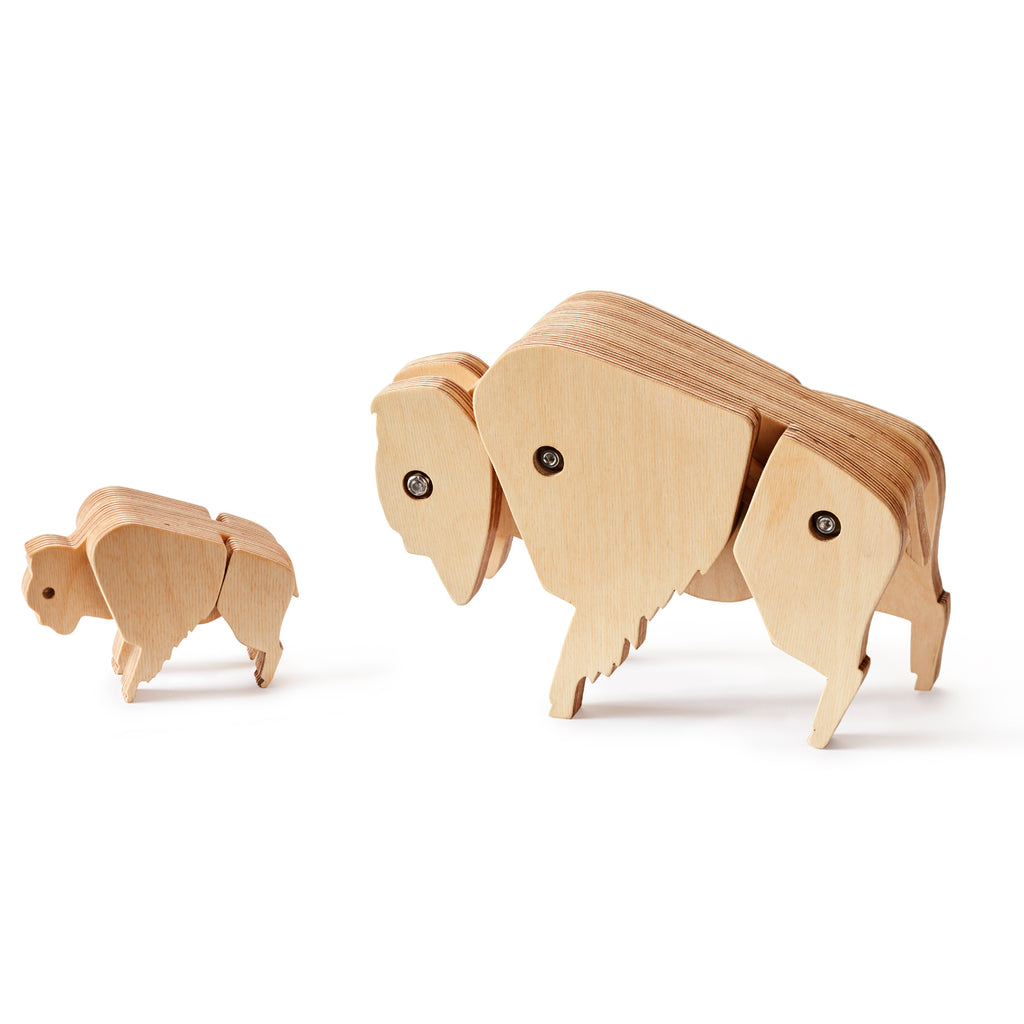
This blog post is inspired by the current exhibit at the Natural History Museum of Utah. The exhibit is called Yellowstone Invisible Boundaries, occurring from June 29, 2019 to September 15, 2019. It is focused on the park’s migratory animals and impacts on their lives from within and outside the Park boundaries.
Among Yellowstone migratory animals are the Yellowstone Bison. These are the only purebred bison remaining from the original species that once roamed freely in North America. Bison which live outside of Yellowstone have been bred with domestic cattle.
Is it a Bison or Buffalo? Buffalo are the large animals in Asia (water buffalo) or in Africa. American bison is the accurate name for the large ungulate in the United States. Incidentally, the scientific name is: Bison bison.
Wikipedia nicely explains the misnomer between buffalo and bison: "Bison is a Greek word meaning ox-like animal, while buffalo originated with the French fur trappers who called these massive beasts bœufs, meaning ox or bullock."
Bison are America’s national mammal and have become an icon of the American West.
I developed the sketches below to understand how the skeletal system affects the outer shape of a bison. A bison’s prominent hump consists of muscle surrounding elongated vertebrae, which gives bison the leverage necessary to push through deep snow with their head.

There were an estimated 60 million bison roaming the American continent during the end of the 1700s. Commercial hunting and slaughter brought the number below 600 in 1889. Although the animals nearly became extinct, their status is up to “Near Threatened.” There are now over 30,000. The bison are not just known for their incredible comeback story. They are also considered a symbol of utility, ecology, and sustainability; encapsulated in the expression “using all of the bison”. The statement stems from the resourceful approach native tribes took to optimize uses for every portion of a hunted bison. The list of bison anatomy is long, and the list of uses is even longer. This link below has a comprehensive multi-page list showing the distribution of bison parts and the different uses
A bison cow can weigh as much as 1000 pounds and a bison bull can weigh as much as 2000 pounds and can run up to 40 miles per hour. Both male and female bison have curved horns. Bulls are not involved in raising calves. For as peaceful as they appear, bison have proven to be much more dangerous than bears within America’s National Parks.
When I decided to develop an articulating toy bison, the first step was to study a bison skeleton to understand where the shoulder and pelvis joints occur relative to the animal's overall form. I was surprised to see how low the bison shoulder occurs relative to the height of its back; but based on my findings, I developed the progressive design sketches below to synthesize the form, and movement into the final toy design.


Tectonic Bison are constructed with material from our furniture production which would otherwise be wasted. The sculptural toys are also highly durable and long-lasting objects.
Tectonic Bison stand proudly and remind us of the history and culture of the American West. They are also hand-made in the USA and are available on our website and in the NHMU museum store.

Check out the How our Tectonic Bison Started as an AT-AT
Or, read Why Wooden Toys are Back in Vogue